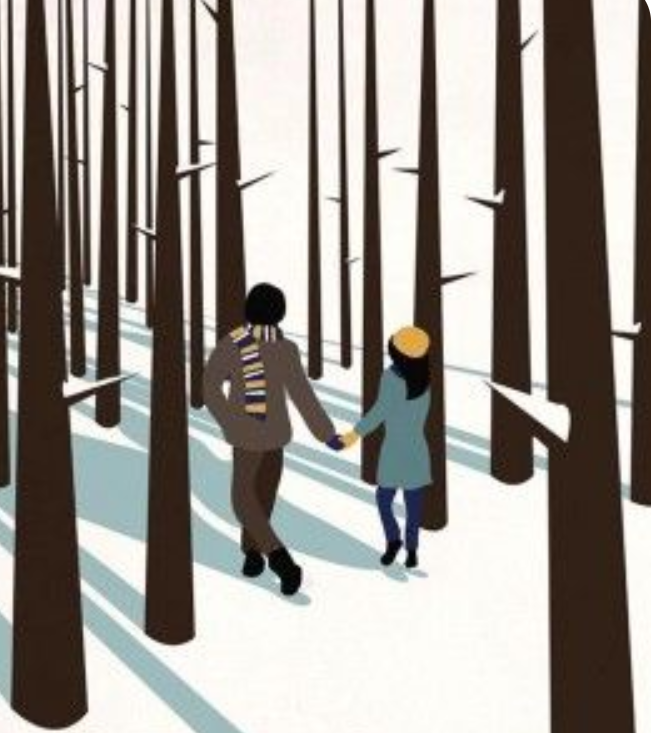by Hazel Anna Rogers
I first read Haruki Murakami’s ‘Norwegian Wood’ when I was 17, in my first relationship.
As it happened, it was my first foray into Japanese literature, albeit in translation. There was something disconcerting about the blunt narrative voice, a candidness that left no room for pretense or embellished lexis. It felt spontaneous yet considered. It was as though the narrator was conveying their thoughts in a sort of modernist stream-of-consciousness way, but far less elaborately. It was beautiful.

Haruku Murakami. Photo: The New York TImes
My partner and I found strange resemblances between our own relationship and that of protagonist Toru Watanabe and his friend and love interest Naoko. The number of months between our birthdays was the same, some of the conversations were akin to our own, and Naoko’s disposition, in some ways, was similar to mine at that time. She was overemotional, erratic, and difficult to understand. Her pain was misunderstood, and we never really get told why she hurts so very much, though it was partly as a result of the suicide of her and Toru’s best friend on his 17th birthday.
The novel is a chronicle of loneliness on the part of protagonist Watanabe as he navigates the world of loss alone. Murakami has a fascinating way of depicting relationships and love, and from all of the books that I have read by him I have noticed there always seems to be a sort of juvenile awkwardness about them alongside the aching beauty of young love. His characters are strange and incohesive, and the narrators always seem quite unreliable, yet we trust them wholeheartedly and flow in their river of consciousness, unquestioning and earnestly following their stories as they recount them.

Artwork for the film Norwegian Wood, directed by Tran Anh Hung.
Norwegian Wood is a book about death and winter. When Naoko takes her own life at the mental institution near Kyoto, surrounded by a bleak and unforgiving snow covered landscape, Murakami transfers this death into Toru by freezing his own mind with Naoko’s, forever intertwined with the soul she left behind. This unending winter shadows his life as he knows it, characterized initially upon his hearing of the Beatles track ‘Norwegian Wood’ when he moves to Hamburg in his late thirties. What follows is nostalgic and painful recollection of his younger life, though one also filled with wisdom and light.
It was one of the first books in my life that I read more than once, and one of the first that made me cry long and hard through many of the passages. Japanese funereal traditions and attitudes towards death are at once similar and different from those that I am familiar with. I came across the 2008 film ‘Departures’ a few years after first reading Norwegian Wood, a movie directed by Yōjirō Takita that follows a young (failed) celloist who finds work as a ritual mortician known as a nōkanshi. Despite battling societal prejudices against his job, the integral beauty and care of his role transcends all the difficulties associated with it. The ritual has foundations in the Buddhist tradition, and involves washing the body, filling holes with fabric, and dressing them in white, then endowing them with items they can bring with them after death.
Open casket is common practice in quite a few countries, and I think there’s something important about seeing the dead in order to understand death and come to terms with it. Thanatophobia (fear of death) is inherent, to some capacity, within human existence, particularly because of the ever inconclusiveness of what happens after we pass from this world. We are petrified by death, yet every breath brings us ever closer to it. Upon reading Norwegian Wood and watching Departures, I felt the only thing that remained a constant in the Naoko’s suicide and the rituals of the film was what was left behind. The pained bodies and minds, bearing the weight of memory. Toru, nearly twenty years later, remains haunted by his memory of love and the significance of the seemingly banal moments he spent with Naoko. The people in Takita’s film cry onto the bodies of the dead, holding the physical embodiment of memory for as long as they can.
There are similarities between what I recognize of death in my world with that of Toru Watanabe’s. Toru is trapped in a cycle of remembrance, of the suicides and deaths in his life, but never brings them to the surface to acknowledge them and break free from his dreamlike, sorrowful existence. He is stoic, oblivious to what his life could be if he chose to piece his soul back together. Death brings the shadow of winter over him, and this I recognize well. We are ever exposed to figures, in life and literature, who cannot, or choose not to, move on with their lives after loss or death. Dicken’s Miss Havisham is perpetually dressed in her wedding gown after being left alone at the altar. Helen Macdonald’s H is for Hawk memoir sees the narrator become insular and untrusting of others after her father’s sudden death. Hamlet’s taste for revenging his father’s death brings him to the depths of depression and insanity, eventually ending in his own death and others close to him. We read Hamlet’s lonely soliloquies, we observe the hateful destituteness of Miss Havisham, we trace the first-person narrative of Helen Macdonald’s grieving narrative voice, and we follow Toru’s life as a portrait defined by the losses in his life. In these mournful voices we recognize the sorrows of our own life, often painstakingly shielded from the look of others. We confront death alone, and we die alone.
During his time in college, Toru encounters the love of vibrant classmate Midori Kobayashi which he cannot accept for fear of losing Naoko, even in the wake of her death. We are left wondering what path he chooses to take, to wallow in his bygone days or pursue his heart’s desire. I like to think he held onto the spark of life that Midori offers him, that he flew out of his cold everlasting winter to embrace love once again. My own long, dark winter gave way to spring through the love I had found in my partner, and I learned to live again, to laugh and clutch each wonderful moment of enraptured passion I could while I was still here, breathing, and alive. This book taught me much about rejoicing for what I have, not what I’ve lost.
================
Blog homepage is at https://www.carlkruse.com.
Contact Carl Kruse – carl AT carlkruse DOT com
Hazel Anna Rogers’ last post was on the anniversary of J.R.R. and Edith Tolkien.
Before that she wrote a piece on writing in winter.
Carl Kruse maintains another blog at https://carlkruse.at
He can be dark, but I love the writings of Haruki Murakami.
Love Murakami and enjoyed Hazel’s journey through Norwegian Wood.
Same here!
I have never read any of his writing but I am fascinated by Murakami’s personality as revealed by others.